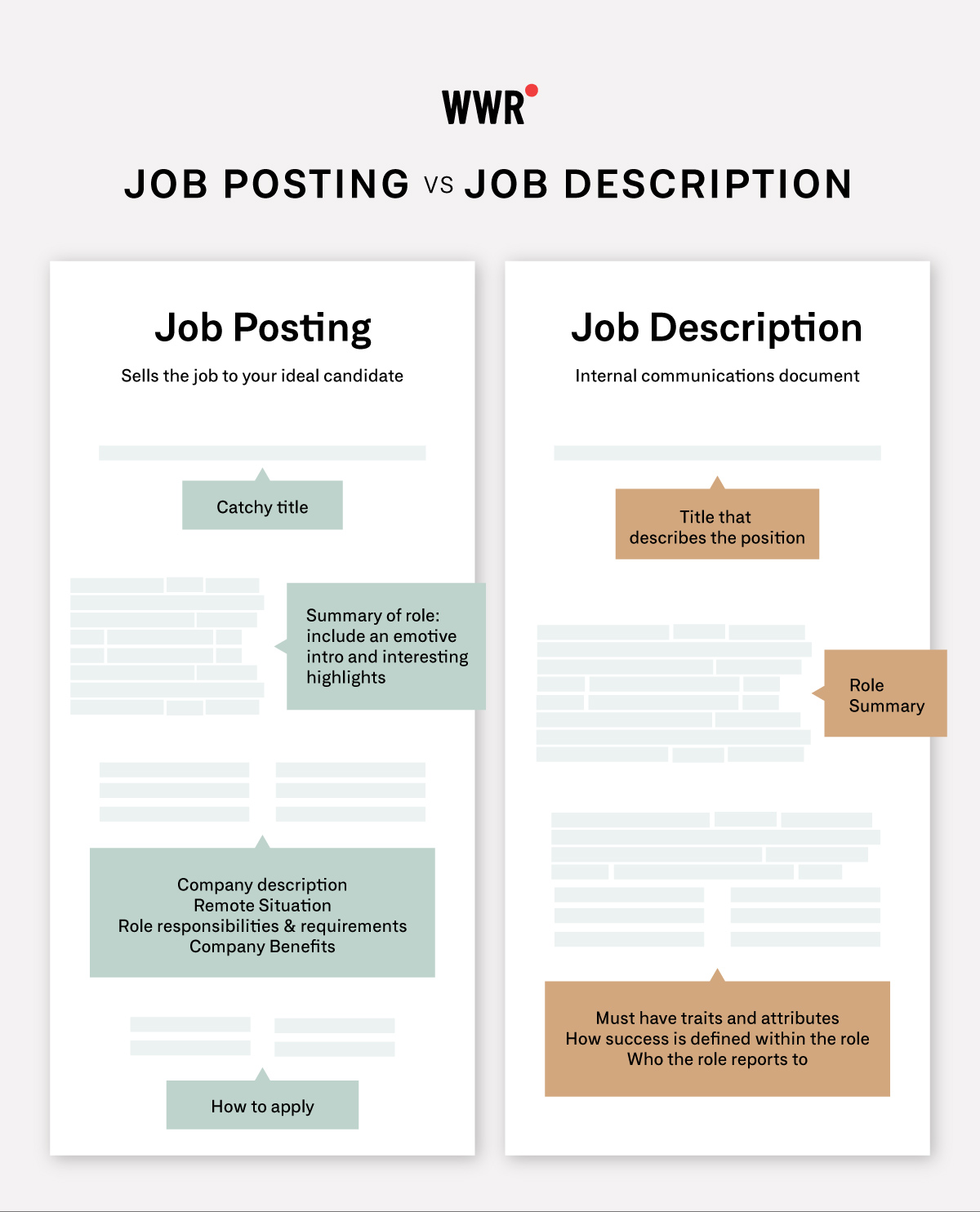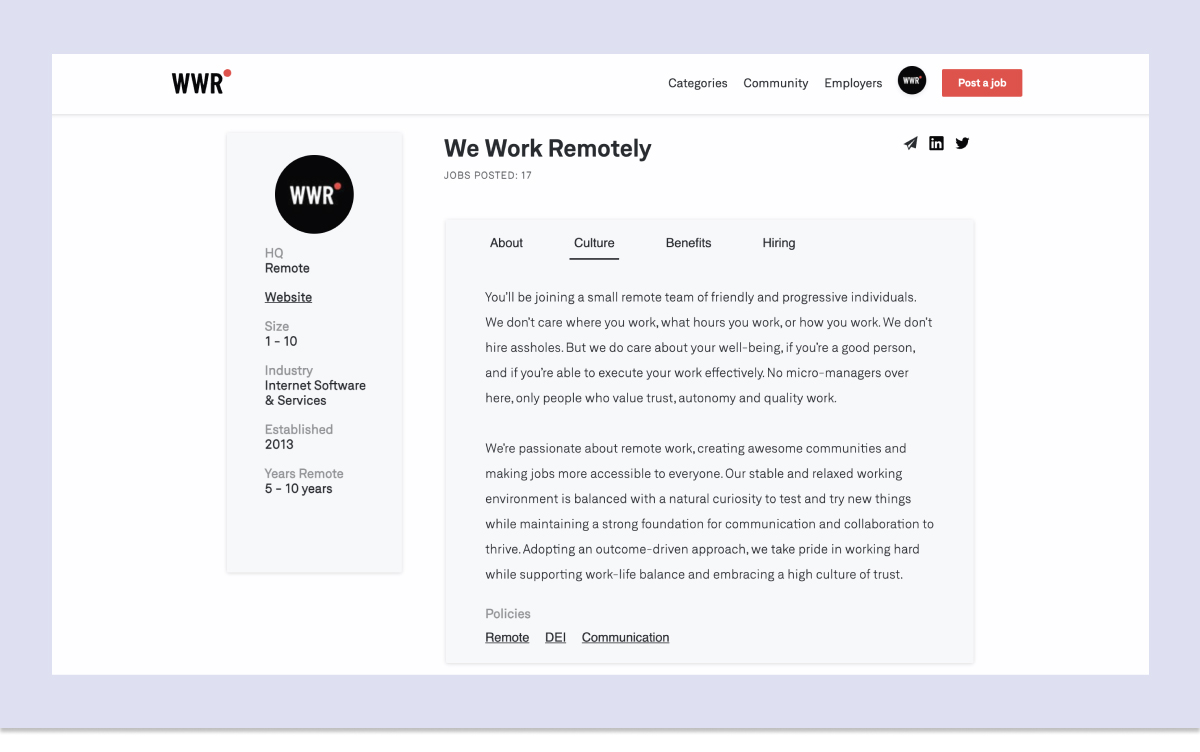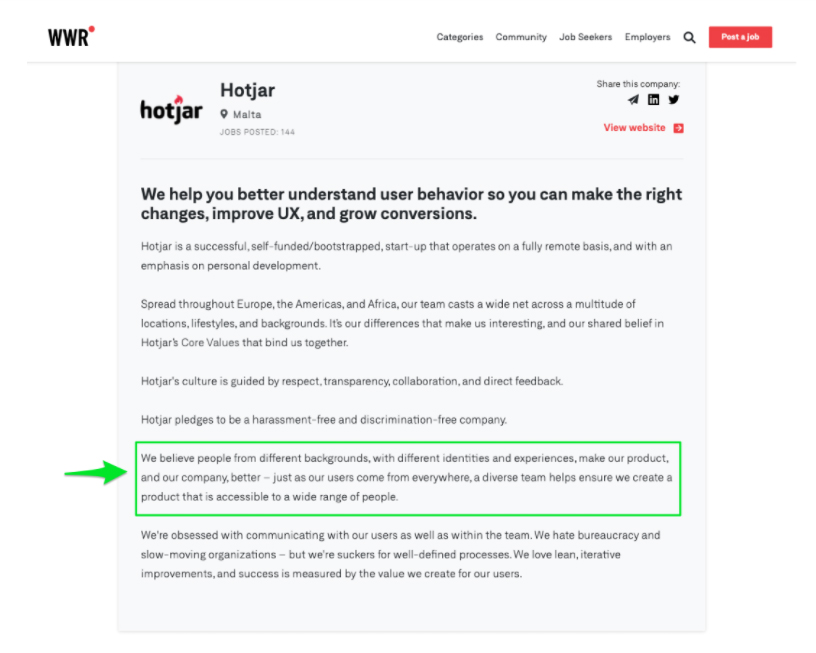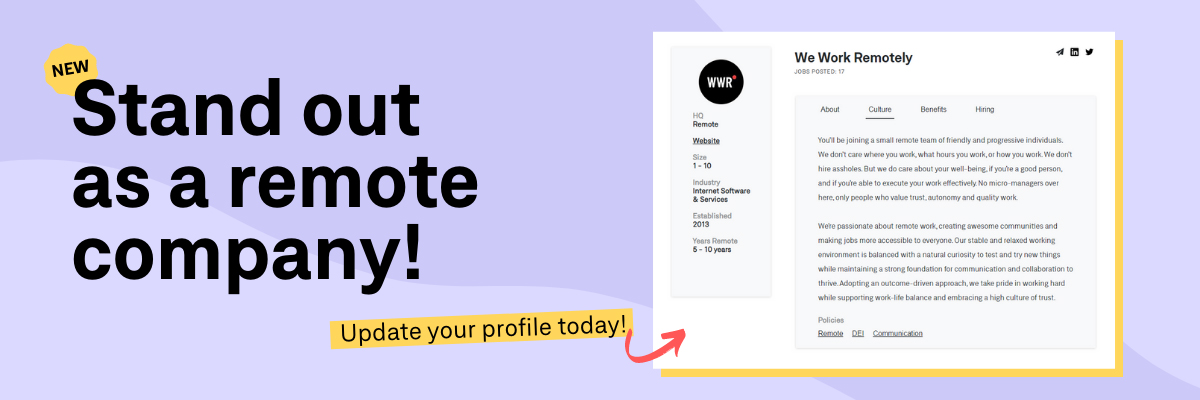How To Get Applicants To Apply For A Job
Want to know how to get applicants to apply for a job? We’ll show you how to get more qualified job applicants for your remote team in less time now:

Want to know how to get applicants to apply for a job at your remote company?
Recent stats tell us that the biggest recruitment priorities for companies in 2021 were improving quality of hire (52%) and shortening time-to-hire (23%). These priorities haven’t changed much in 2022, but the competition for top candidates sure has.
Events like the COVID-19 pandemic and the Great Resignation have created a candidate-driven market where applicants are becoming more choosy about where they send off resumes.
They’re demanding more from employers, and if you want qualified applicants to apply for a job with your organization, you better know what they’re looking for.
So in today’s post, we’re outlining eight ways remote companies can increase their chances of attracting top applicants in less time. Trust us, it takes more than a witty one-liner in your job ads (though that certainly doesn’t hurt 😆).
How To Get Applicants To Apply for a Job at Your Remote Company
Follow these eight tips, and you’ll have tons of qualified applicants to hire and add to your candidate pipeline for future roles:
If you haven’t updated your remote hiring strategy in a while, make this your first task to tackle. The best hiring strategies give your team a game plan for how to get more qualified job applicants who are also the perfect fit for your company culture and diversity goals.
Once you’re confident in your strategy, see if your hiring and recruiting data reveals any roadblocks you may need to sort out. Without the most up-to-date roadmap, you may keep spinning your wheels and getting nowhere on the new hire front.
Similar to your remote hiring strategy, many HR teams forget to take advantage of their hiring and recruiting metrics -- and that’s a big mistake. Understanding your recruiting metrics will spotlight areas in your hiring strategy that need improvement.

For example, if your metrics show abysmal application completion rates, there may be something wrong with your application process or a glitch preventing candidates from submitting their resumes. Fix these, and you may immediately boost the number of candidates you receive.
Is a long list of must-haves hurting your application rate? One study revealed that men will apply for a job if they meet 60% of its qualifications, but women will only apply when they meet 100% of them.
This may be why so many companies are now loosening candidate requirements to cast a wider net into the talent pool. To do this:
Encourage education and experience from all walks of life. No college degree? No problem! Some of the top companies in the world are ditching the requirement for a traditional four-year college degree in lieu of experience, certifications, digital portfolios, and assessment tests.
After all, applicants don’t need formal degrees to thrive as software developers, graphic designers, or digital marketers. These self-taught candidates may have more discipline and drive to boot.
Think about which skills are necessary and which can be learned on the job. Research shows 66% of companies will train and hire candidates who show potential but may lack certain skills. So don’t discourage them from applying with a strict must-have list.
Let critical thinking tests and behavioral assessments clue you into solid applicants. If candidates don’t include the right mix of hard and soft skills on their resumes, you may never know their actual strengths. Send your most promising candidates quick surveys or assessments to see where they shine. A staggering 75% of employers use behavioral questionnaires to assess soft skills.

Open positions to overseas candidates. Expanding your search to include overseas candidates comes with many benefits.
Speak directly to your ideal candidates. Try to flip the script from “We’re looking for” to “You are.” This is much more relatable, and applicants will have a much easier time picturing themselves in the position. You’ll also make them feel like your ad was written specifically for them, making them more likely to apply.
The best remote job listings do the heavy lifting of finding qualified candidates for you (and naturally weed out less-than-perfect fits). But writing job ads that get applicants excited about the position and motivate them to apply takes a bit of know-how.
That’s because a job posting or listing is not the same as a job description. So if you’re simply copying and pasting these interchangeably, it’s no wonder you’re not luring in top candidates.

A job description explains the internal responsibilities and the company’s expectations for an employee in a specific role. But a job posting sells the position, your company, your fantastic team, and why someone should hit that ‘apply now’ button.
Value alignment is the biggest trend in the current job market. Value alignment is when a candidate’s personal values and goals mesh with an employer’s company mission and ways of doing business.
According to the latest job market surveys:
- 64% of candidates will research a company online before applying to an open role; 34% will pass on it if they can’t find enough information about the company.
- 92% of professionals would consider leaving their current jobs if they received a job offer from a company with an “excellent” corporate reputation.
- 50% of candidates admit they wouldn't work for a company with a “bad” reputation -- even for a pay increase.
So when we asked our remote community what they’re prioritizing during their job search, it was no surprise when values-based criteria came out on top. Job seekers want to know:
- How intentional is the company's remote culture? What values do they believe in?
- What kind of remote company are they? How long have they been operating remotely?
- What employee benefits and perks does the company offer?
Focusing on these three questions will help you attract more talented candidates.

Tackle these four areas of your company profile to give job seekers the intel they’re actively searching for:
Who are you as a business? Who is your company? Tell your story in a brief paragraph of 3-4 sentences. Describe the problems your company solves, how long you’ve been around, and the stability of your company.
What makes your remote company culture stand out? Share your remote work personality, team culture, and what current employees say makes your company desirable.
Remote company culture encompasses an organization’s mission, values, and the principles its employees share and uphold. These guiding beliefs help your team excel and thrive despite being miles apart.
For potential applicants, company culture helps explain how things are done and whether they’ll be excited to work there and contribute to your goals. It also shows them how the company values its team members.
For example, you may want to share how your company supports mental health in the workplace and rewards/recognizes employees.
What benefits do you offer to support your team?
Here are seven key perks that will make your remote employee benefits package more competitive than any other companies’ offerings:
- Healthcare (including telemedicine)
- Flexible schedules and paid time off
- Home office stipend
- Childcare and elderly care assistance
- Continuous learning stipend
- Wellness stipend
- Coworking space stipend
When candidates see these coveted employee benefits, they’ll be more inclined to apply for your job than with one of your competitors.
Give your candidates an estimated job application process timeline. This should include a general description of what applicants can expect during the hiring process, such as:
- How long the application takes
- Whether they need to complete online assessments
- How many interviews you typically conduct
- If they’ll be on-camera virtual interviews or over the phone
- Your average time to hire
Keep candidates in the loop, and they’ll see that your remote hiring team functions like a well-oiled machine, which is definitely reassuring.

Update your profile with all these nuggets of intel, and you’ll stand out as a stellar remote company and attract candidates who align with your values.
6. DE&I: Show That You Practice What You Preach
Although Diversity, Equity, and Inclusion (DE&I) have become buzzwords in the hiring and tech spaces, we’re glad they’re more of a top priority. Virtual DE&I strategies help remote companies create fair, equal, inclusive workplaces even if their teams work in different countries.

But it’s not enough to just say you believe in DE&I to attract more diverse candidates. You have to show them how you’re implementing these policies before they apply. So ask yourself:
How diverse is our current team? Are there diverse employees in a range of positions? How many are in high-level roles? If you haven’t hired many underrepresented candidates, they may not think you mean what you say. Then they’ll apply to an organization with more representation.
Do our job ads contain salary expectations? Women, BIPOC, people with disabilities, etc., have historically earned lower salaries than white men. So when you base a new hire’s salary off their previous earnings, you’re unfairly penalizing them. Always advertise each position’s salary or create salary ranges based on specific criteria (expertise, experience, certifications, etc.).
Are we using inclusive language? One study showed that male-gendered language on career portals and job descriptions, such as words like “rockstar,” “challenge,” “leader,” and “competitive,” dissuaded women from applying to roles they were qualified for.
So take an honest assessment of how your company’s meeting its diversity goals.
We mentioned application completion rate earlier, and for good reason. Also known as application abandonment rate or application drop-off rate, this metric highlights the percentage of candidates who actually complete your application process versus those who start but never finish.

Stats tell us that:
- 59% of candidates have abandoned an online application due to issues or bugs.
- 76% of job seekers want to know how long it will take to fill out an application before they start.
- Candidates don’t want to complete an application that will take longer than 20 minutes.
So try to ask as few questions as possible, but make them count. Lots of confusing or personal questions deter candidates from finishing applications.
Optimize your online application for both desktop and mobile devices. Since so many candidates apply from their phones or tablets, lack of optimization here will frustrate them out of applying.
If you want to know how to get more qualified job applicants, you have to go to the source.
If you’re only using traditional job boards to find the top remote candidates, you’re probably not receiving many applicants with long-term remote work experience.

Now That You Know How To Get Applicants To Apply For a Job, It’s Time To Start Posting Yours
The eight tips in today’s guide will give your team a roadmap for how to get more qualified job applicants in less time.
Updating your company profile will also boost your overall appeal and brand reputation, so candidates will keep your organization on their watchlist even if you don’t have any openings. It’s a win-win in our books!
Don't forget to subscribe to the newsletter on the homepage at: it